Part 2Making a Hobonichi Techo Cover
We provided “Carton” cardboard artist Fuyuki Shimazu with one of each of the custom boxes we use to deliver the Hobonichi Techo to customers. He began by making a Hobonichi Techo cover for the A6 size Hobonichi Techo Original. Here’s a look at the process.
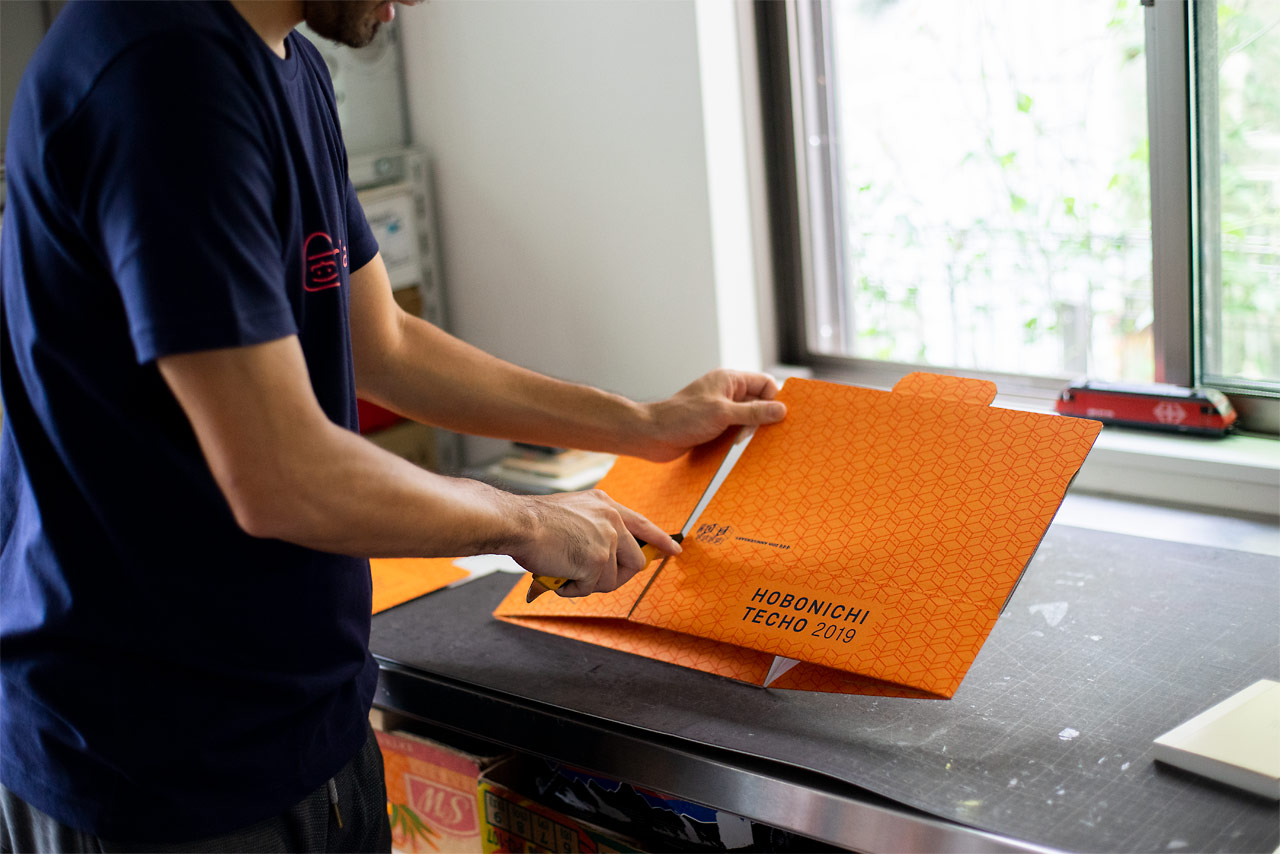
First he uses a box cutter to open up the box. He’s accustomed to turning boxes into certain shapes, but having to work around a book with its own size seems a bit more complicated. He carefully measures everything to make sure the cover will fit the book perfectly.
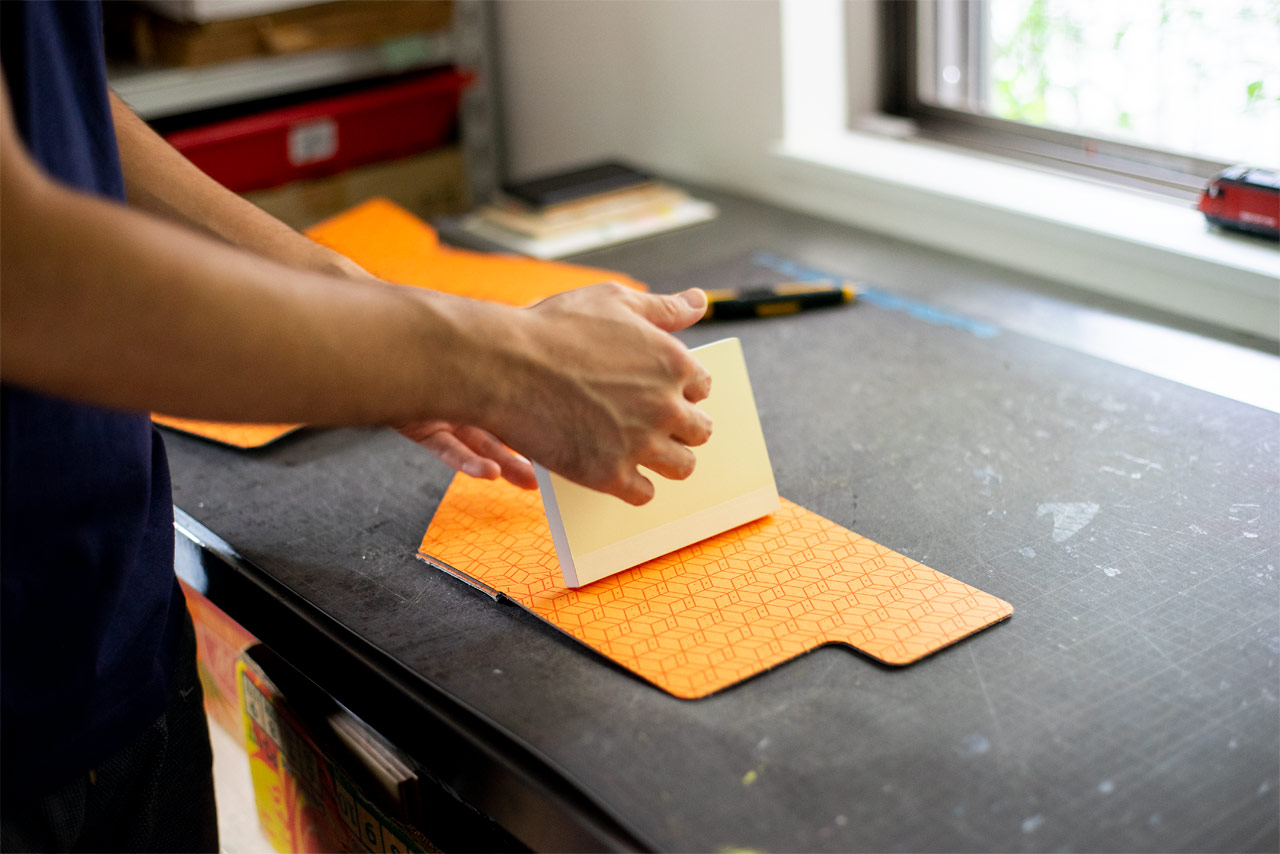
He places the Hobonichi Techo book onto the roughly-cut cardboard and envisions the final product while deciding which spots of the box he will use.
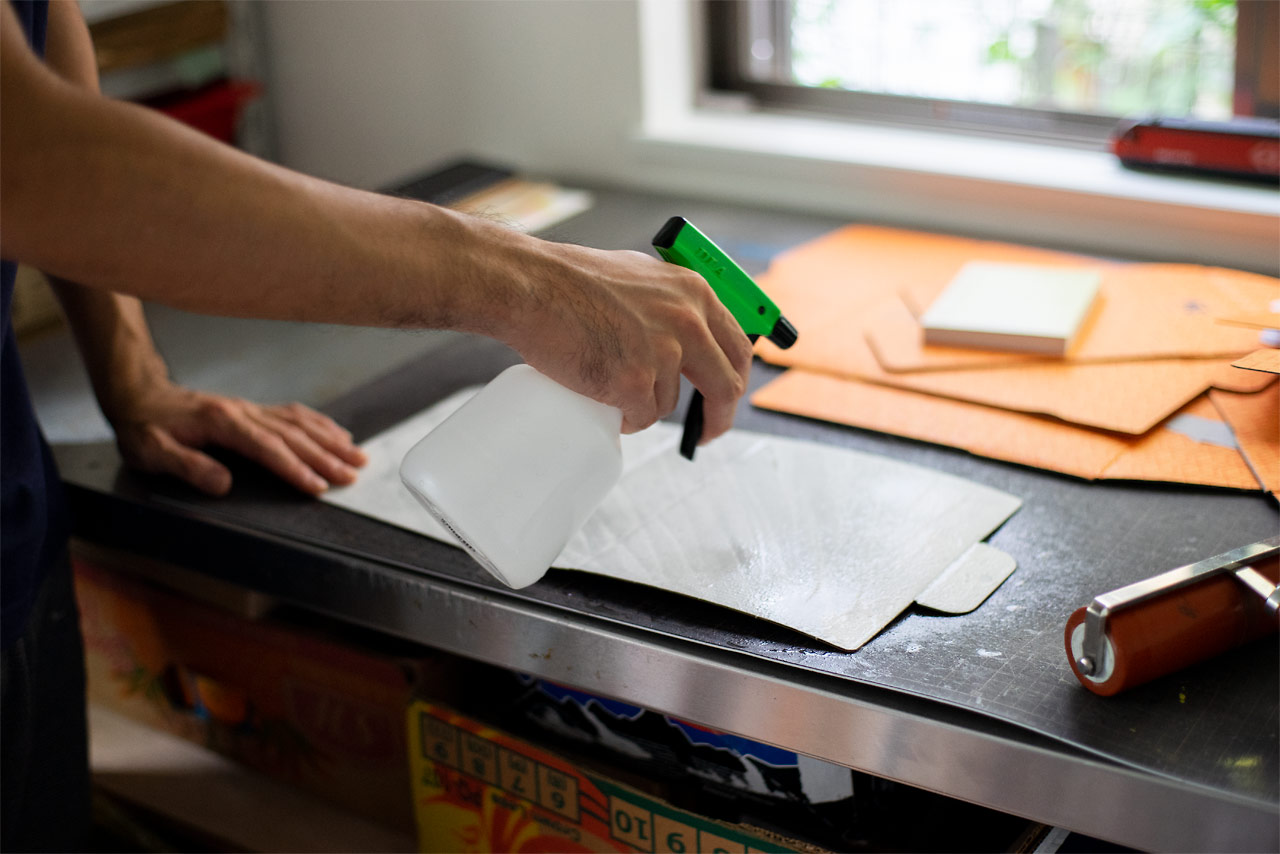
Simply folding the box into a cover would make it too thick for the book, so he thins the cardboard out a little. He does so by spraying the backside of the box and pulling off the liner (the paper on the outermost layer of the cardboard).
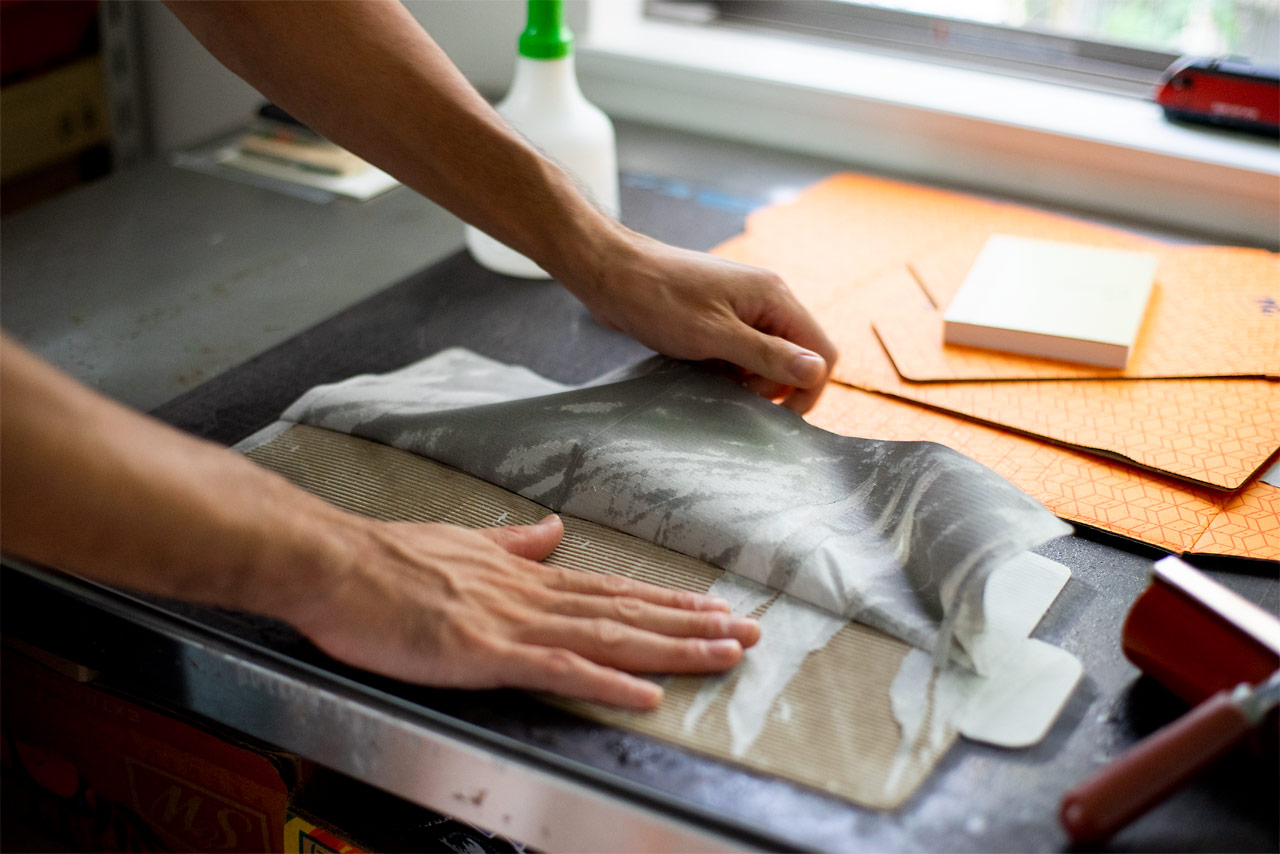
It’s satisfying to cleanly peel off the liner from the box. This is one of the most popular steps at his workshops.
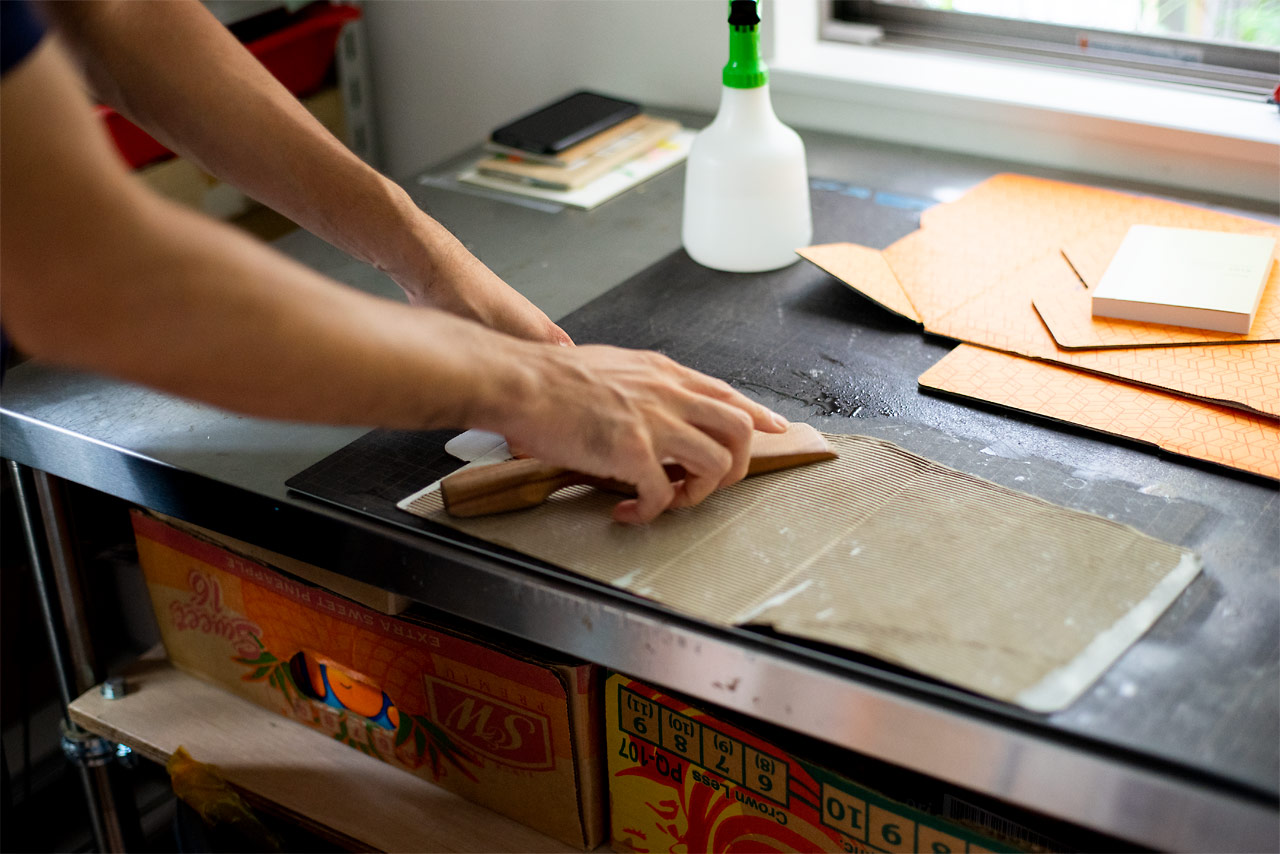
Shimazu uses a wooden spatula to flatten the zig-zag core layer inside the cardboard. The spatula was a gift from a participant in his workshop, and was originally used to create traditional Japanese sugar called wasanbon.
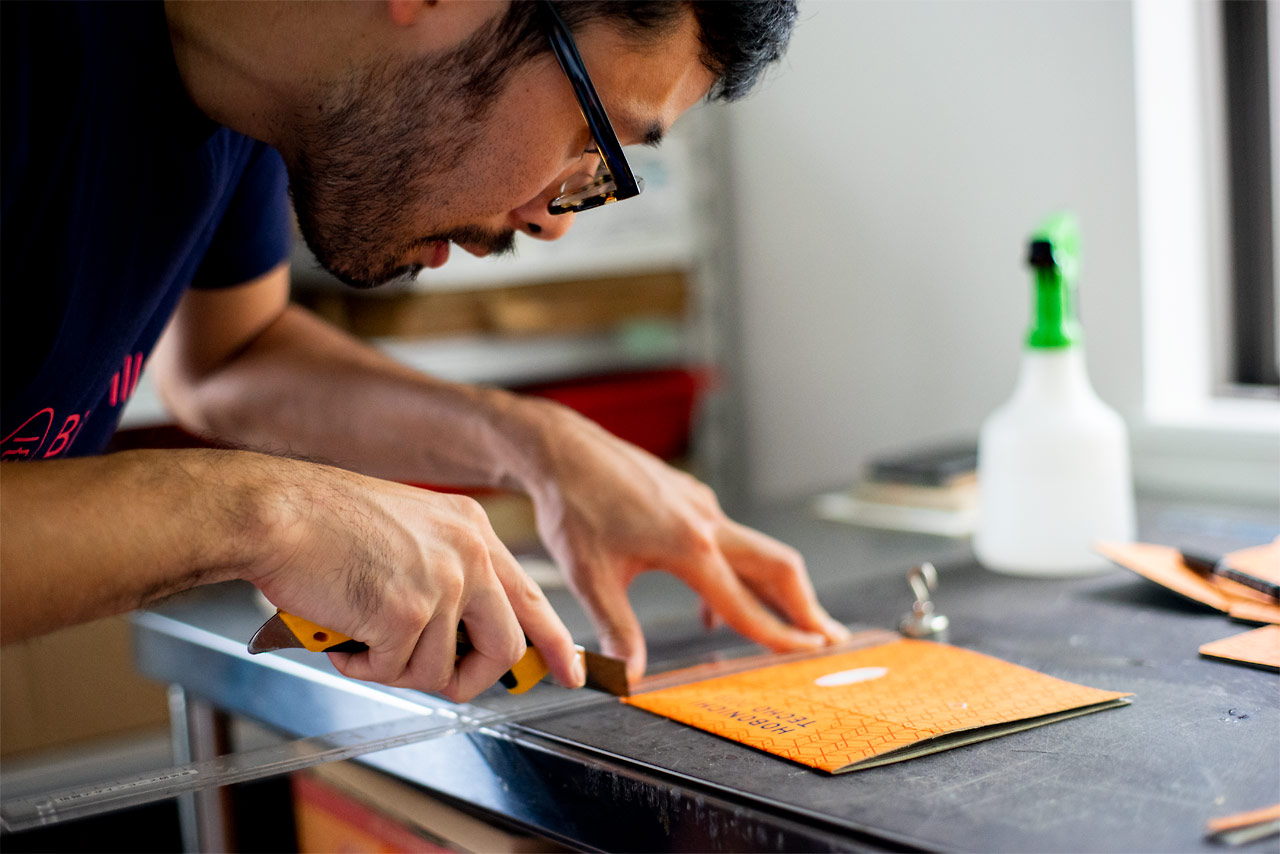
After deciding to use the Hobonichi Techo 2019 logo as the centerpiece, he cuts away at the excess cardboard to match the size of the book.
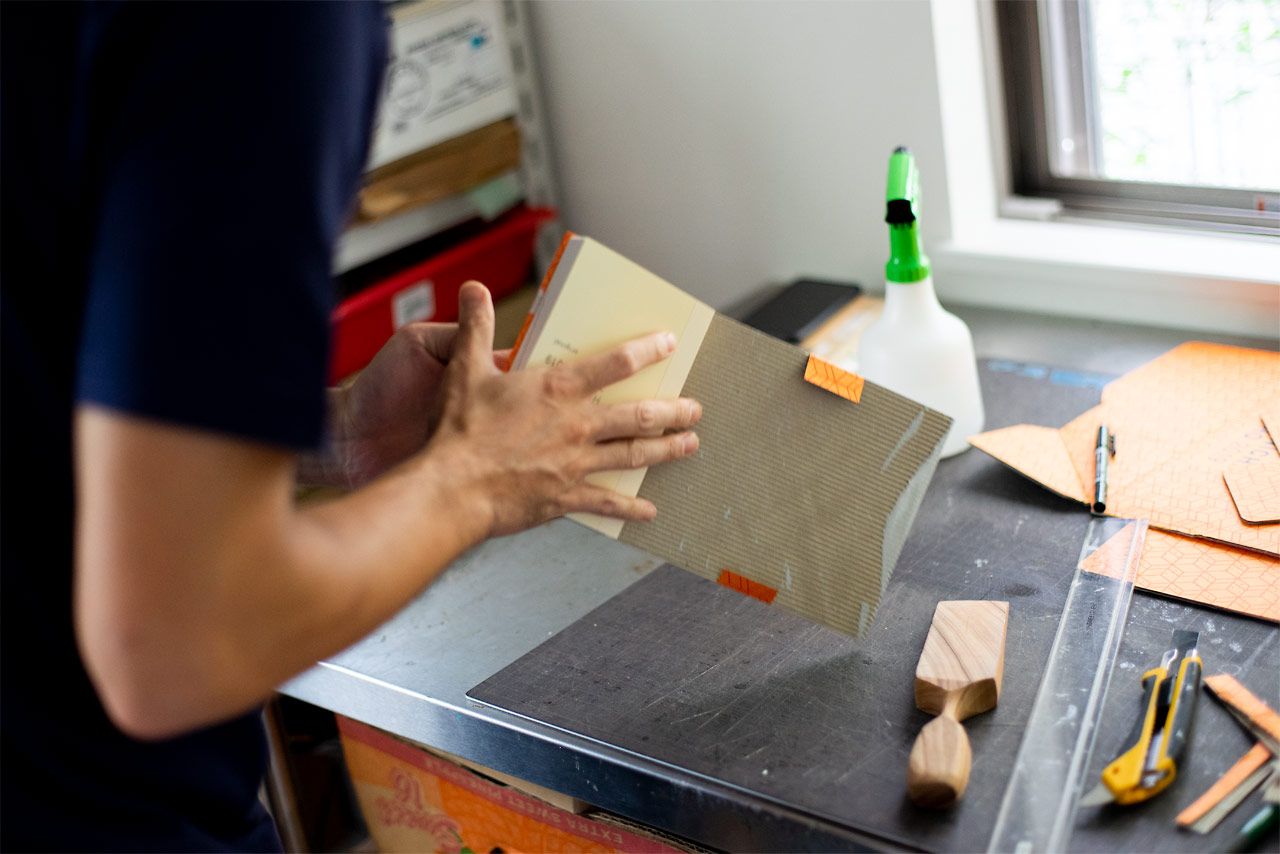
This is what the back of the cover looks like. Tabs are left on the top and bottom for gluing together later.
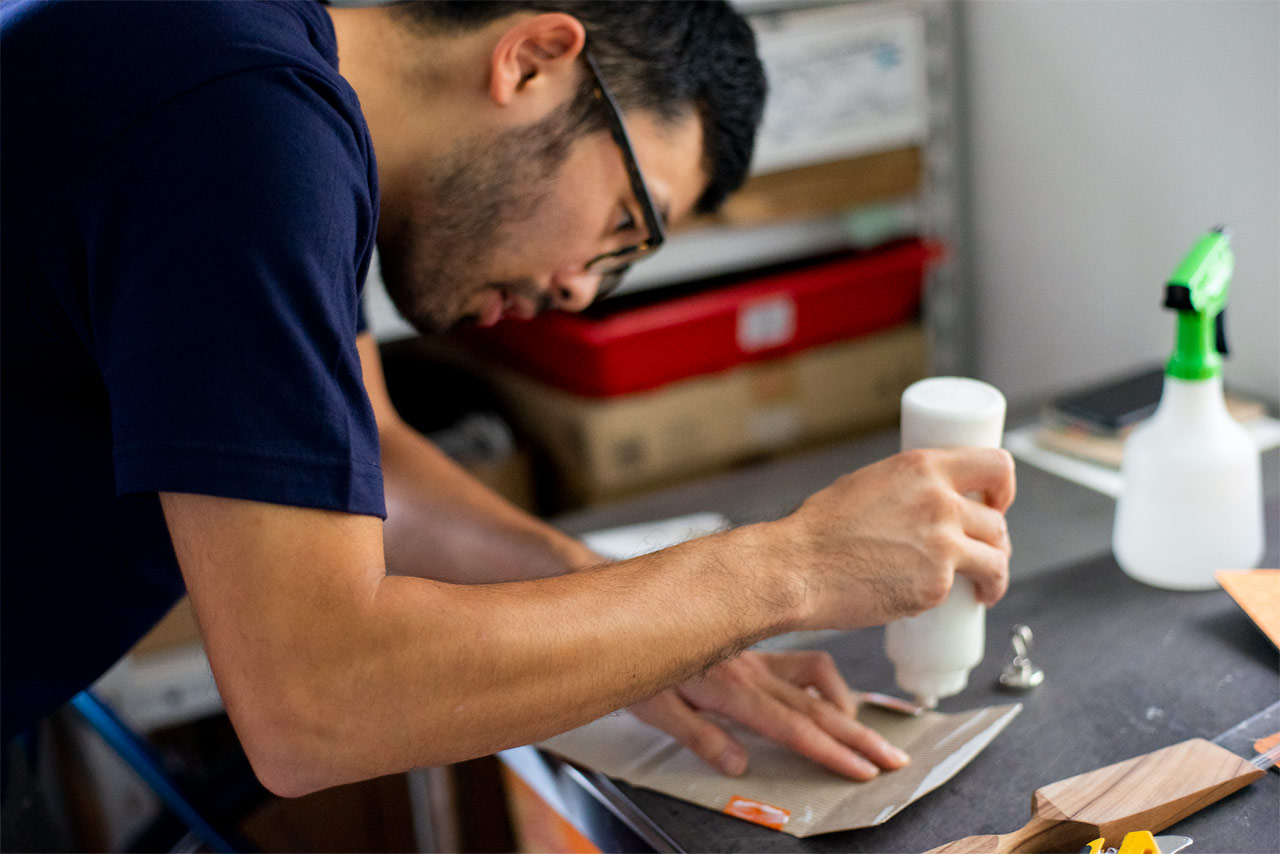
Here he carefully applies glue to the tabs and makes sure nothing sticks out from the edges.
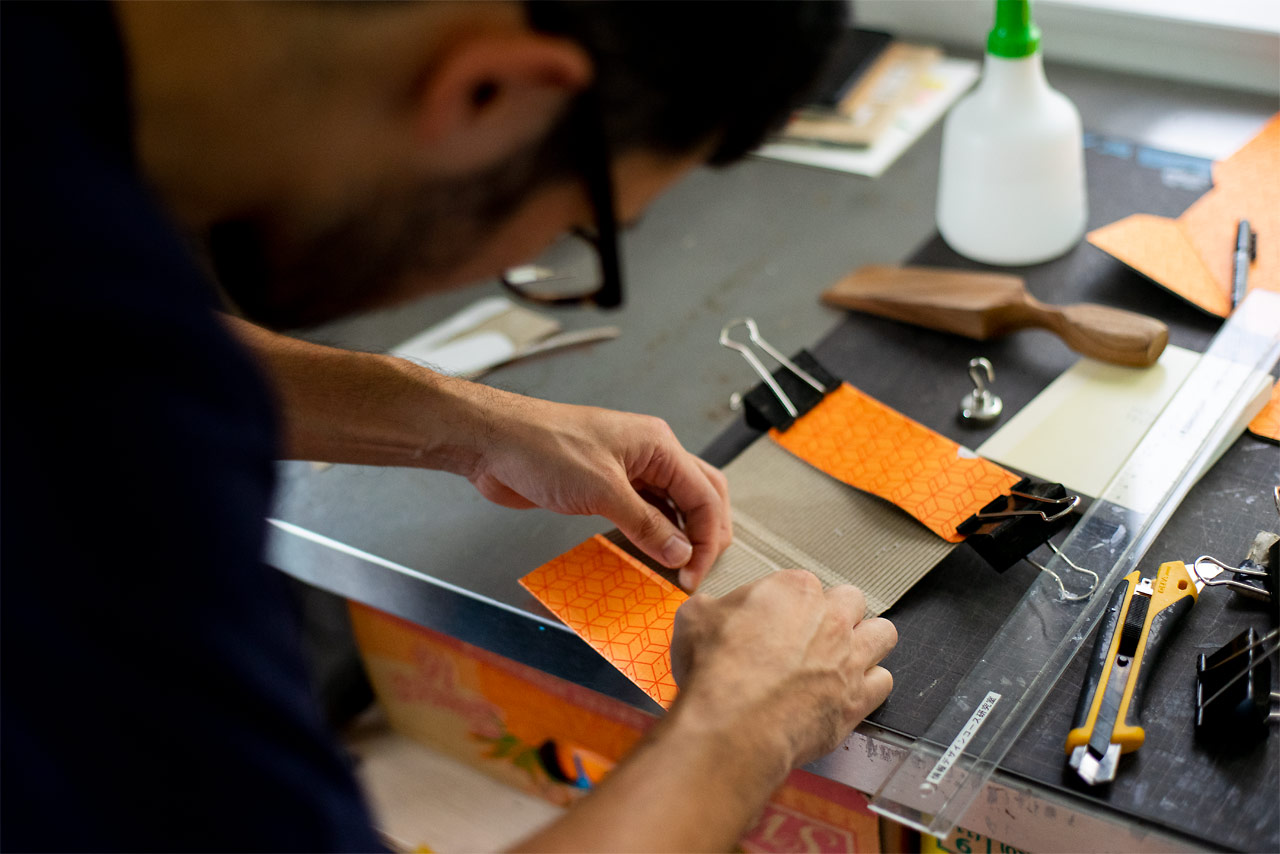
He folds the box to match the size of the Hobonichi Techo, folding the interior layer as he goes. This is to avoid paper cuts while also protecting the edges from fraying.
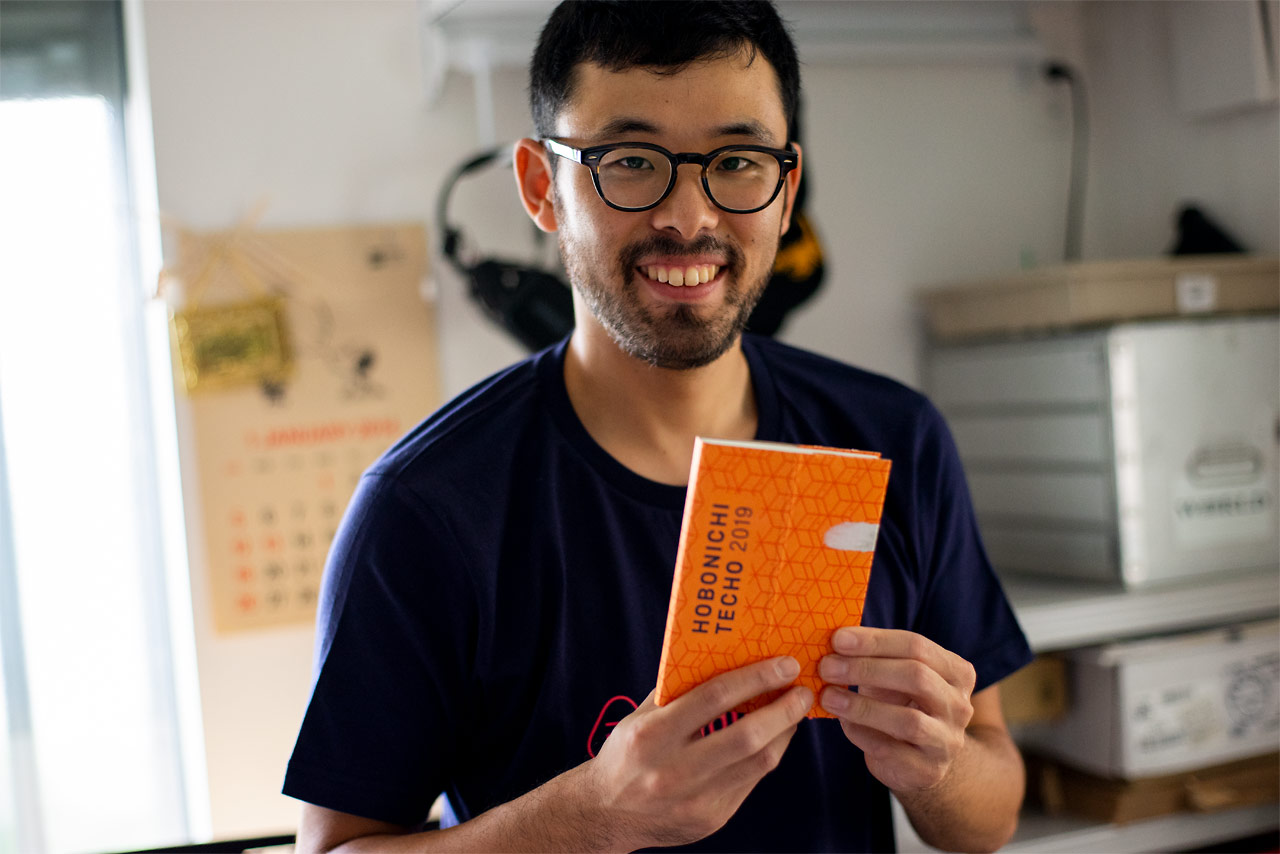
Here’s the completed Hobonichi Techo cover! It took about 30 minutes to get to this point. Now he makes some final adjustments to ensure it fits the book perfectly.
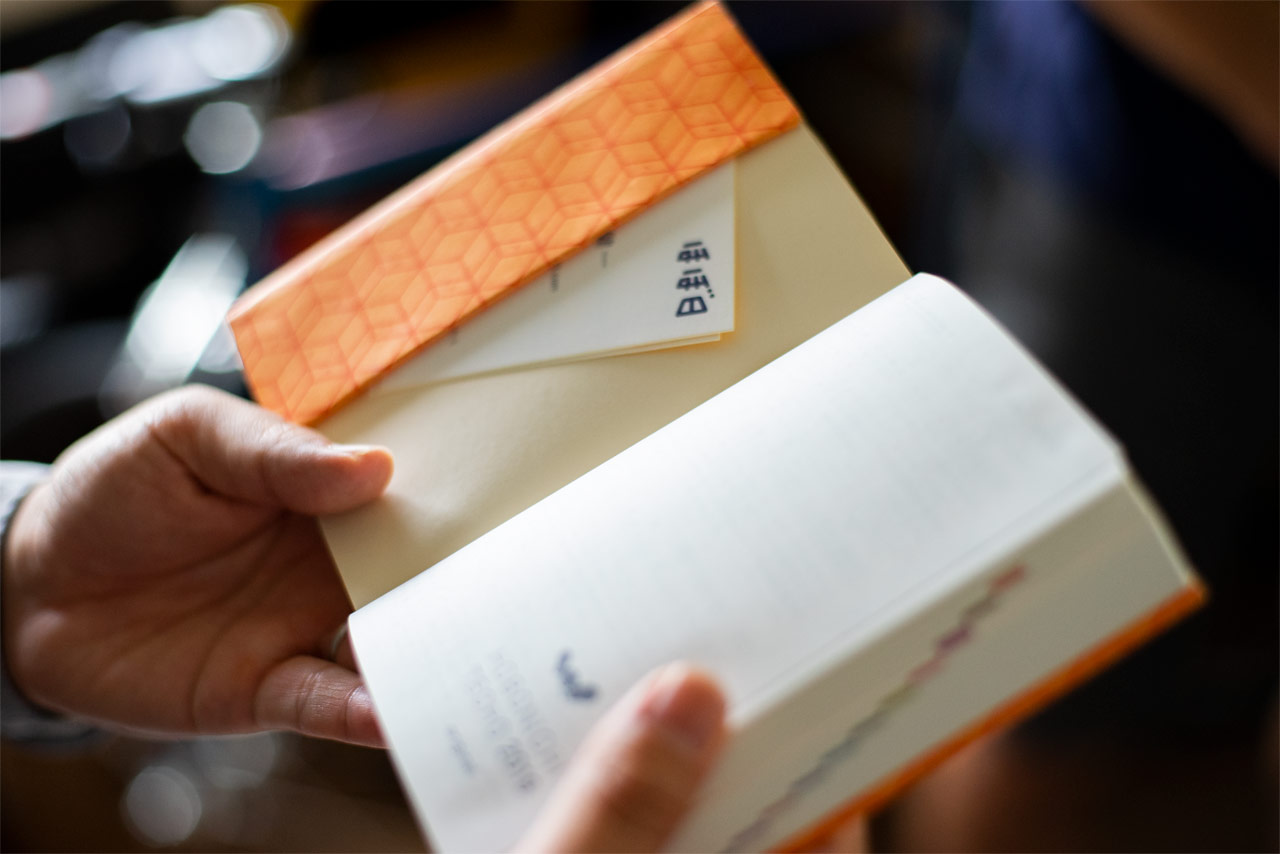
The interior of this cardboard cover allows users to store business cards and tickets. It’s more functional than you’d think! If he spent more time on the cover, he’d be able to add even more pockets.
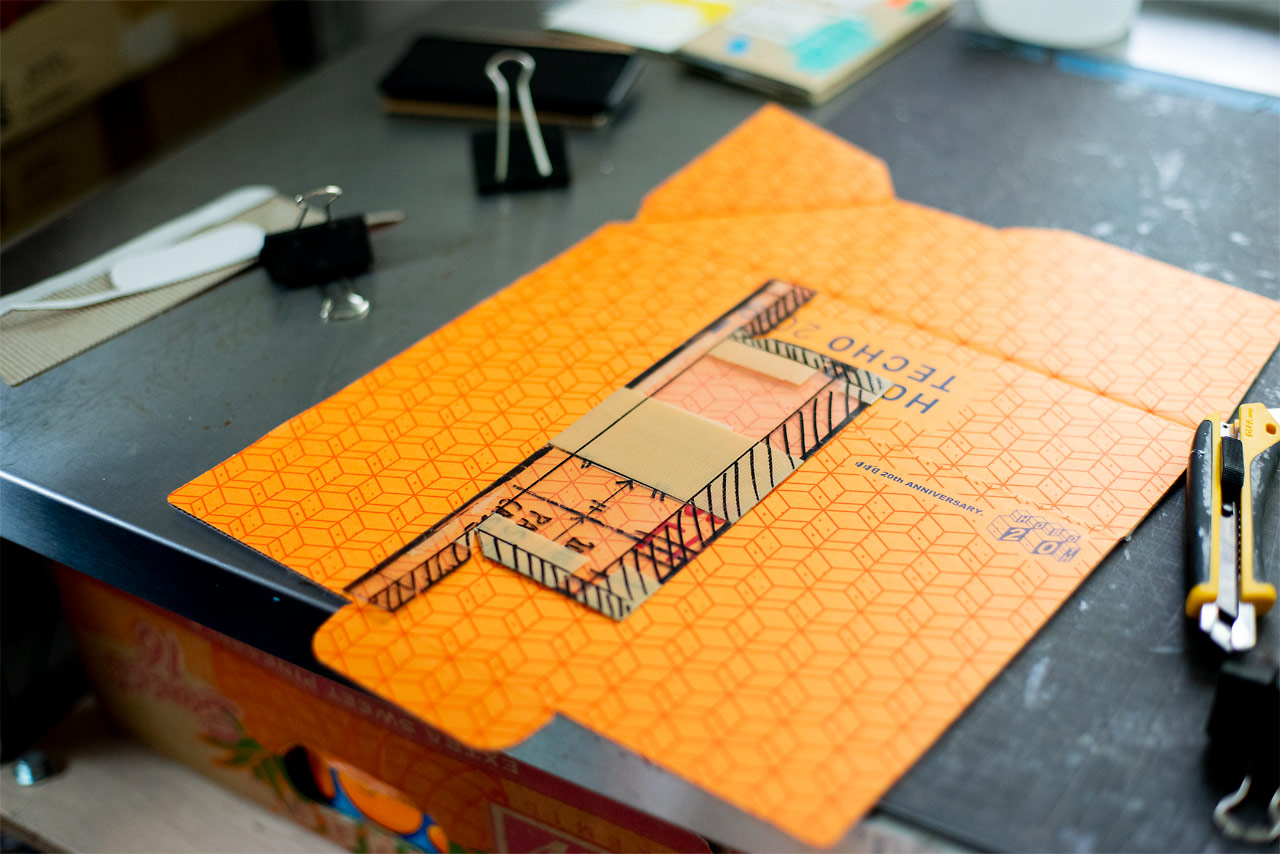
There were some parts of the boxes still left over, so we had him make a pen case that would also work well alongside the techo.
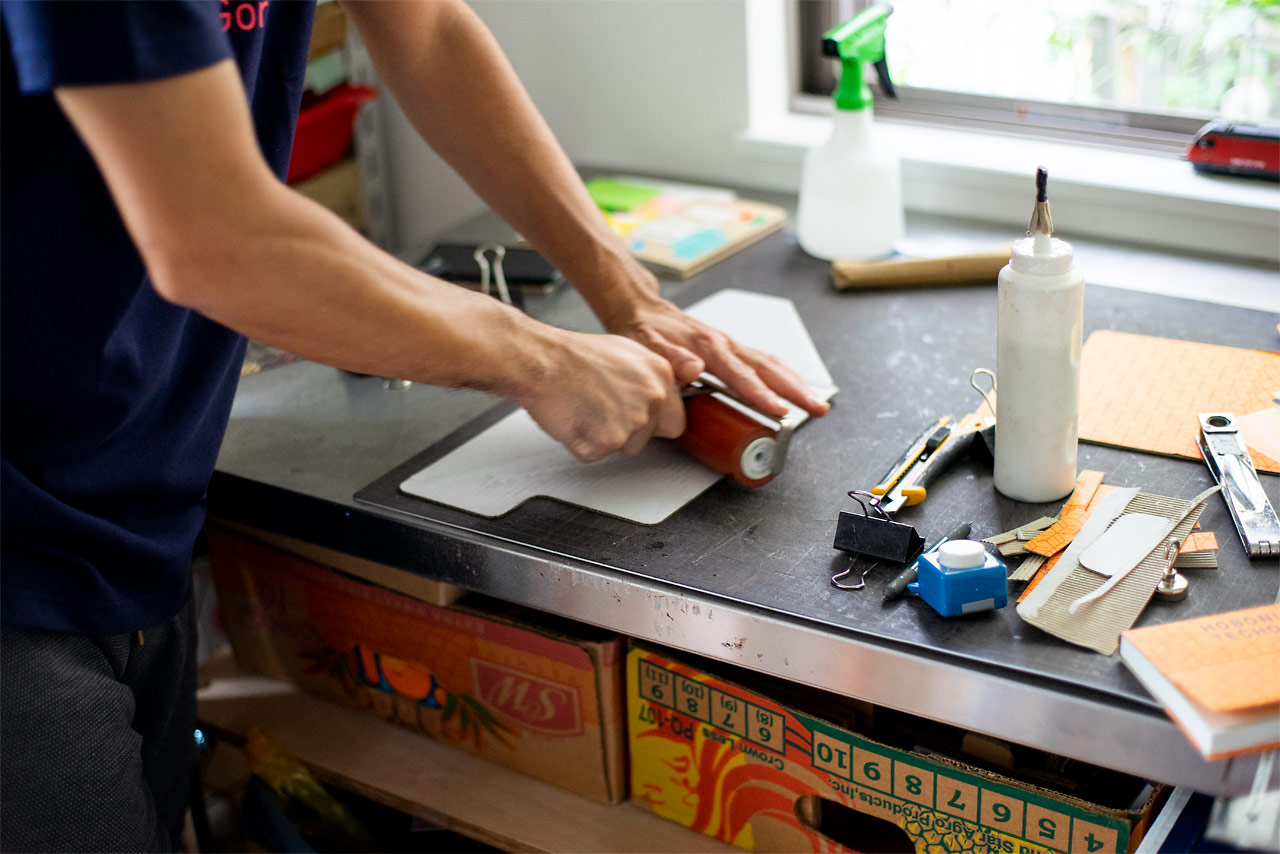
The construction process is a lot like the one he used to make the techo cover. He flattens out the cardboard with a roller and sprays it with water to peel off the liner.
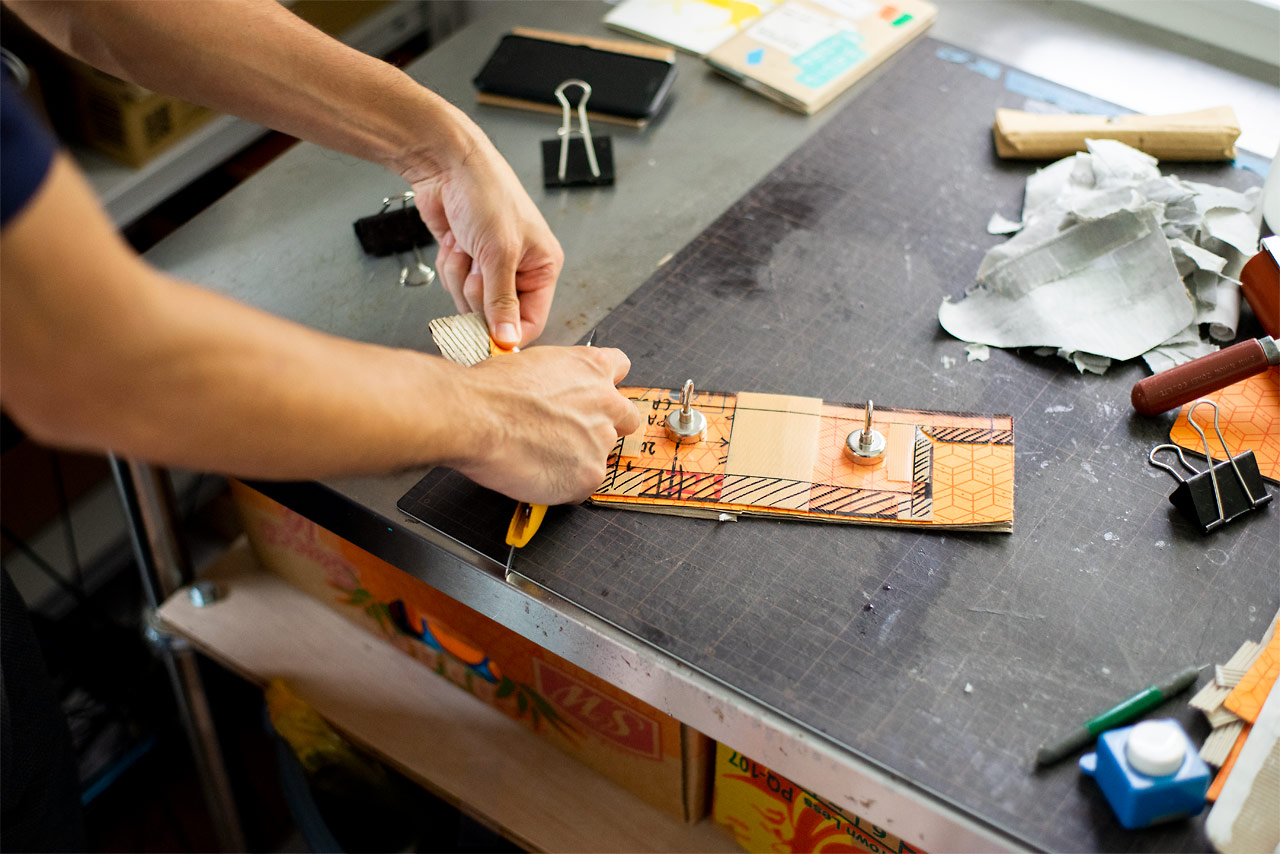
Shimazu has a template for a pen case, so he cuts out the cardboard to match this size. The pen case has a lot more freedom in its size than the techo cover, so it’s not as difficult this time.
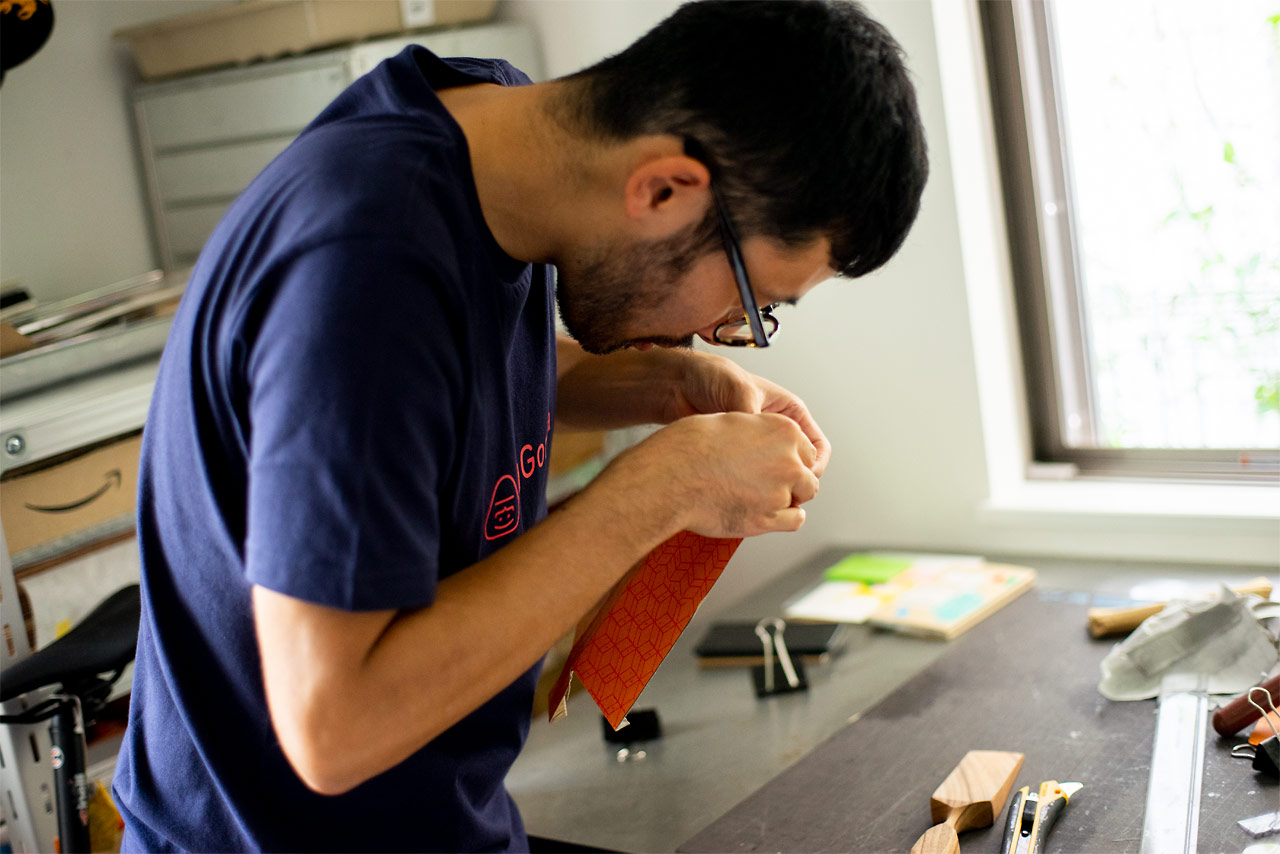
Once he cuts out the shape, he folds it into the structure of a pen case. It’s a very detailed process, but Shimazu is fully concentrated on folding it properly as he bends over and studies his work.
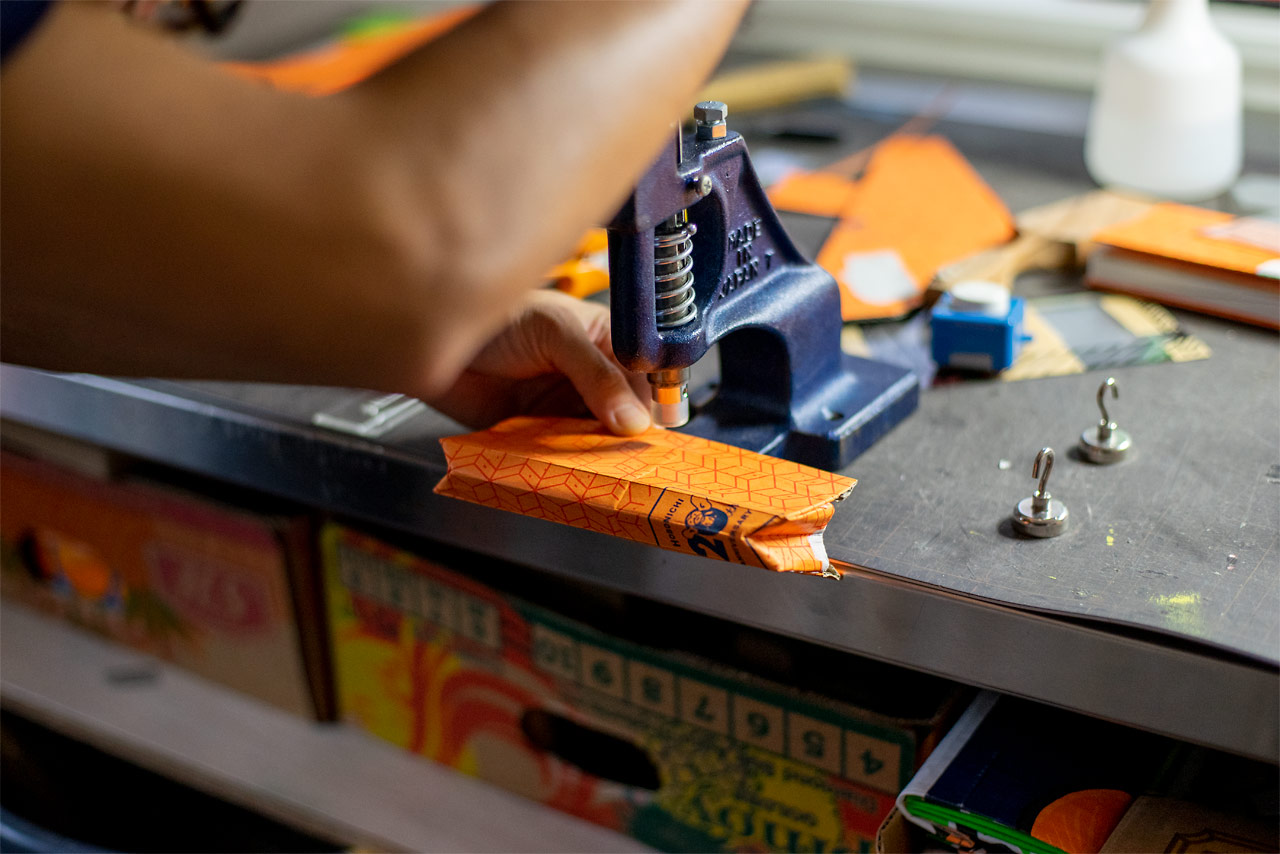
Wow, look at that! The monkey mascot from the 20th anniversary design is on the bottom of the pen case! Once the shape is set, he uses a hand-press machine to finish it up by attaching a snap-on button. One, two, SNAP!
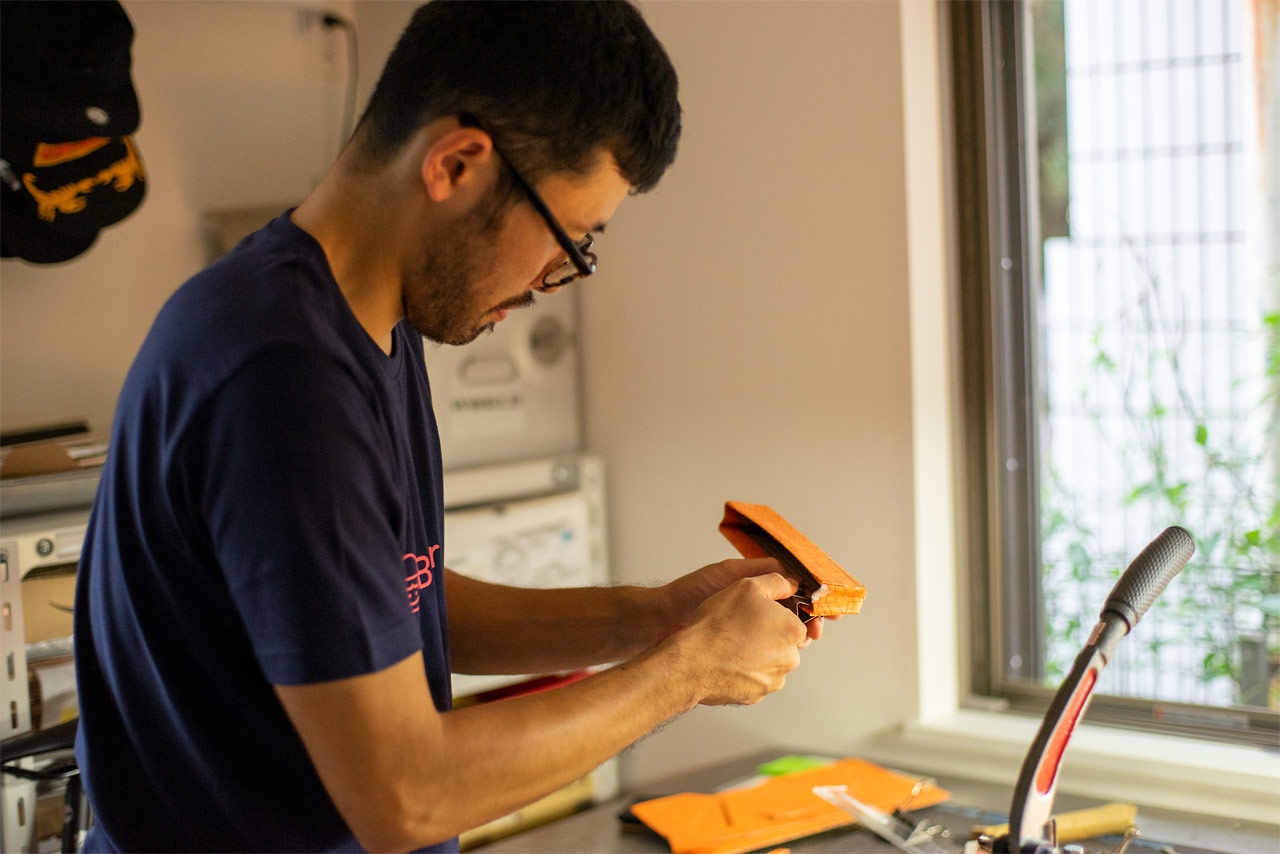
The pen case is ready to go! It may look compact, but you can actually store three pens and still close it with the button.
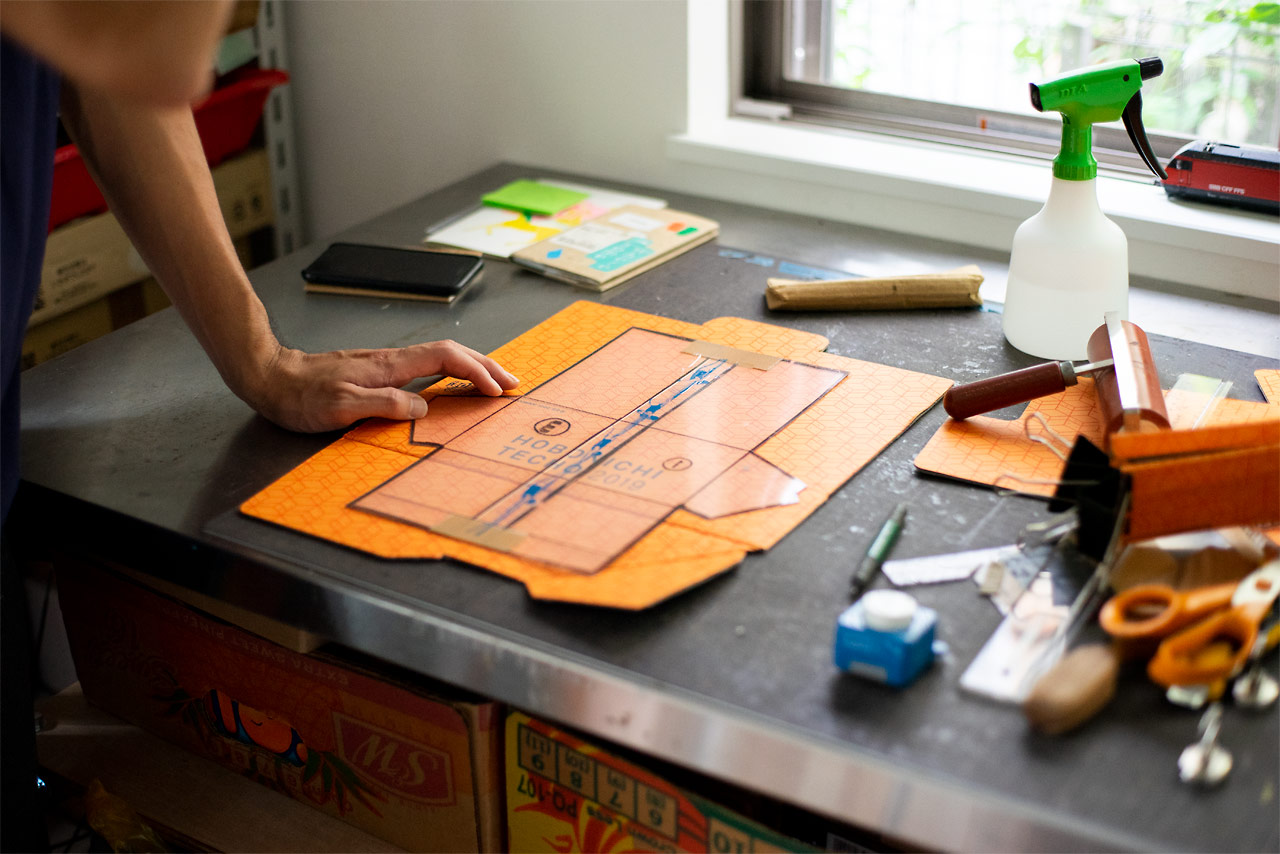
And finally, Shimazu agreed to make a bag that would hold the techo cover and pen case. This too began with cutting out the cardboard while using a template.
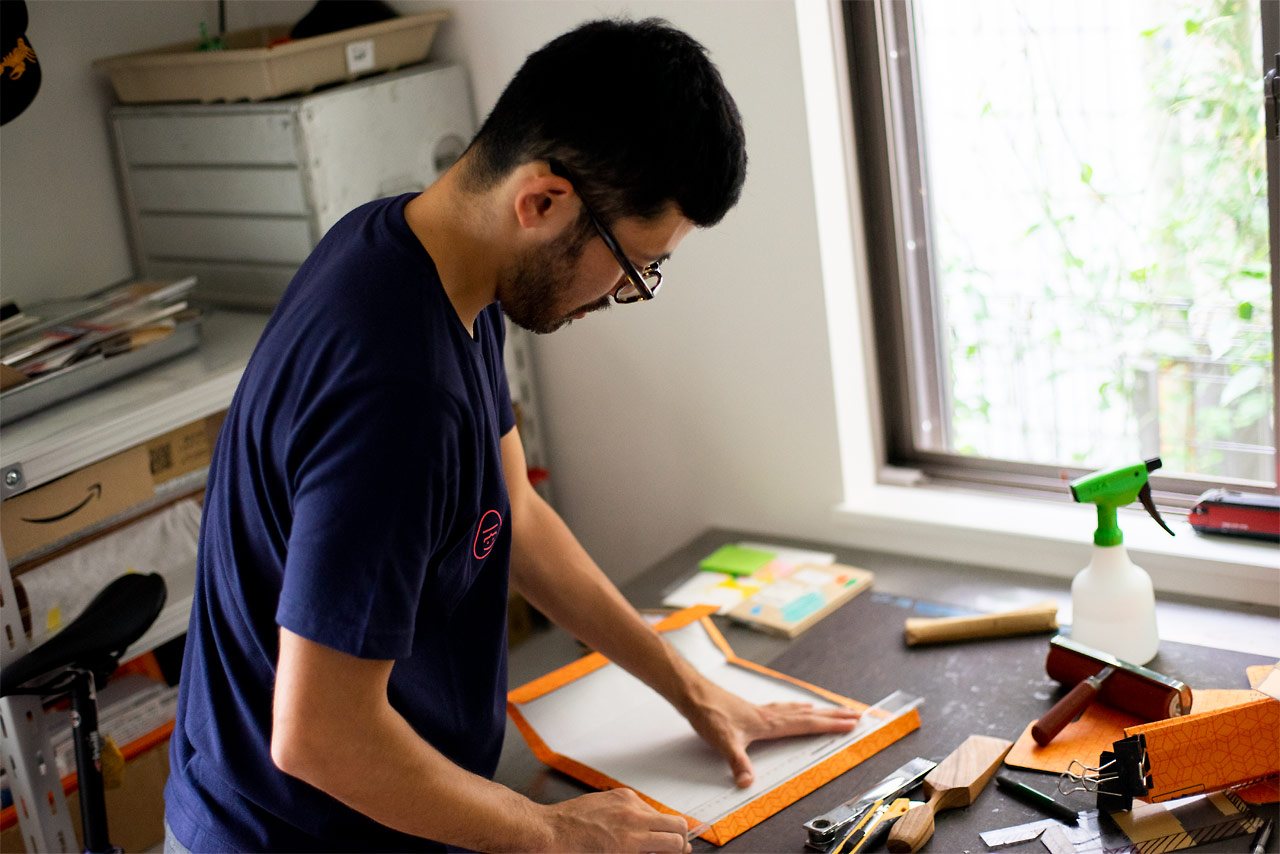
In order to make the interior of the bag strong enough, he uses two layers of cardboard for the front and back. He carefully folds the cardboard to create the shape. Making a mistake in the folding would ruin the shape of the bag.
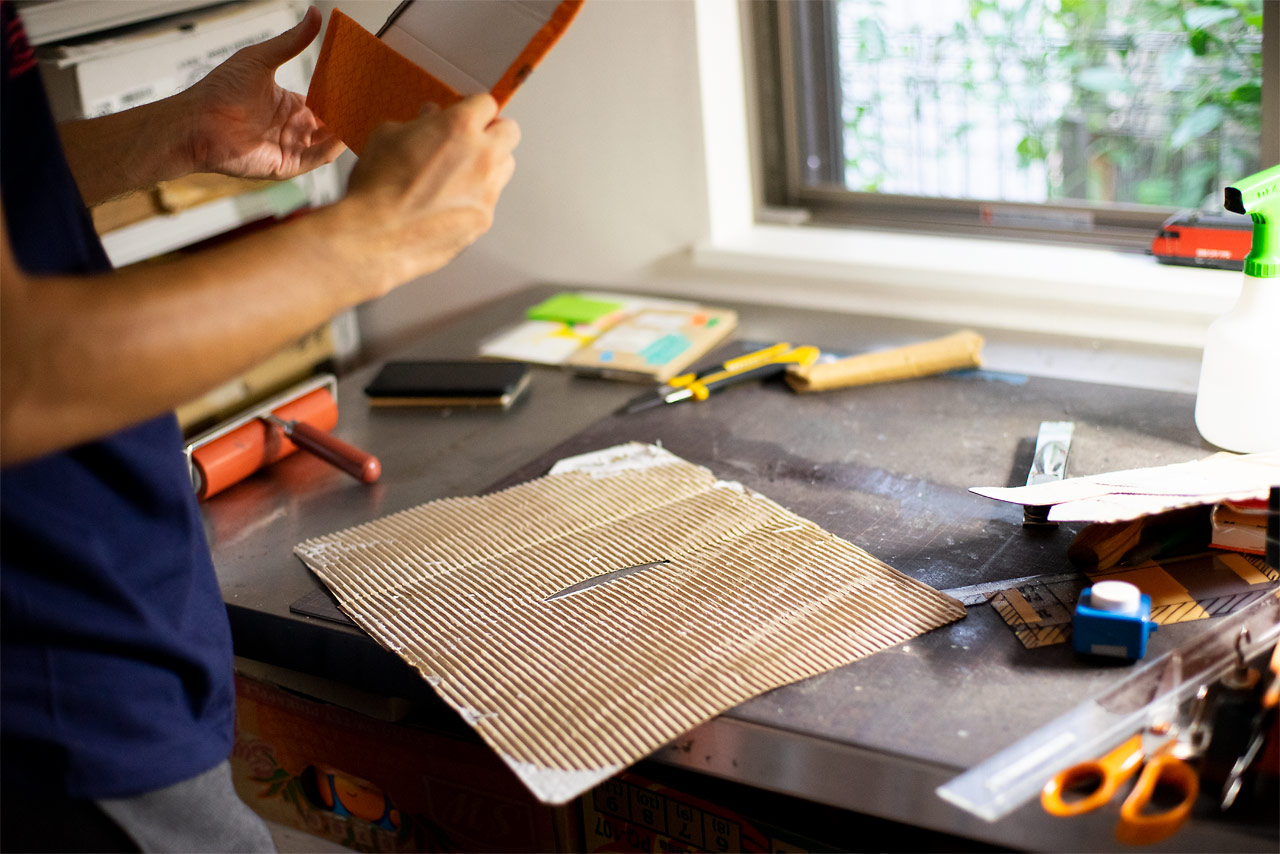
He sprays the cardboard and peels off the paper from the backside. The hole in the center here was originally present in the box, and will be hidden once the bag is complete.
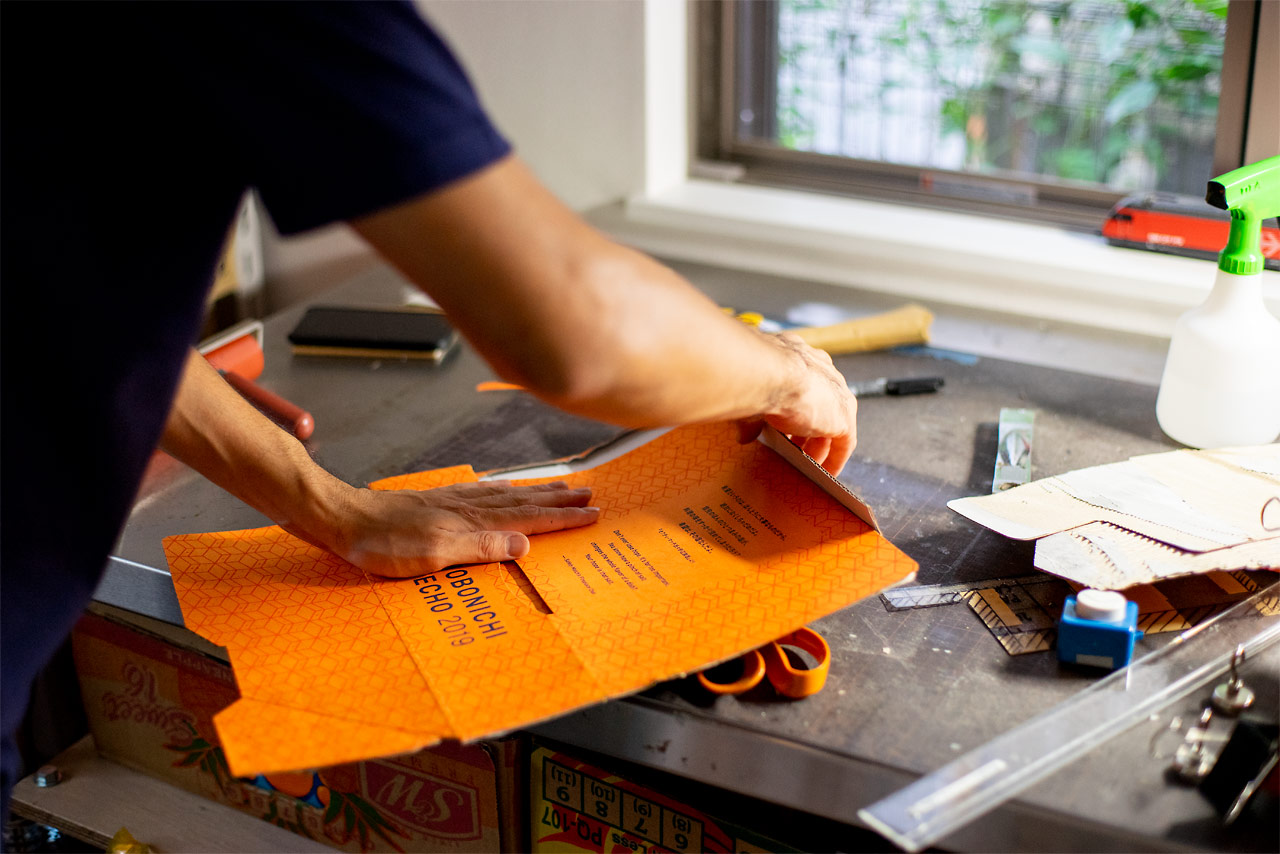
One of the special characteristics of the Hobonichi Techo shipping box is the message from Safety Match that changes every year and is printed on the box lid.
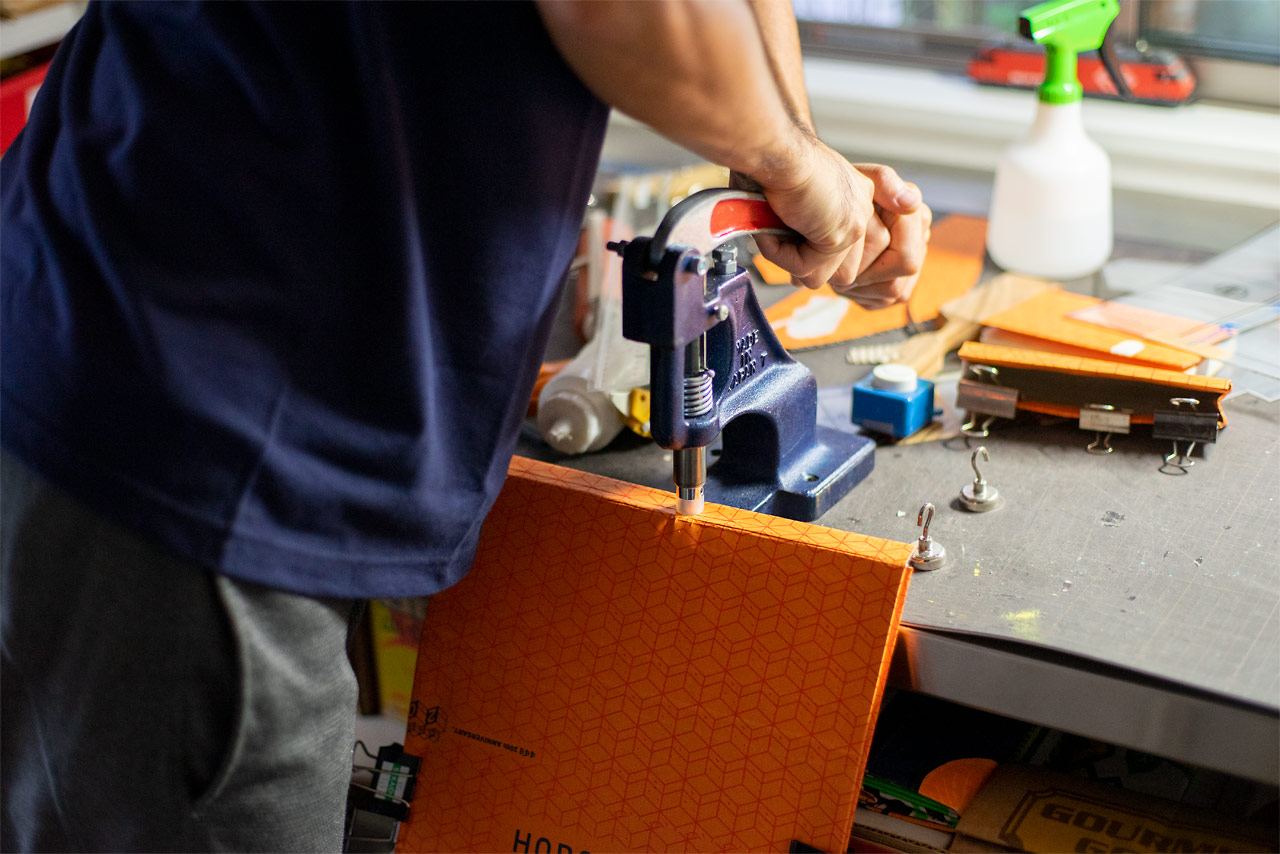
He attaches a button with the hand-press, greatly increasing the quality of the bag by giving it a way to open up and seal shut.
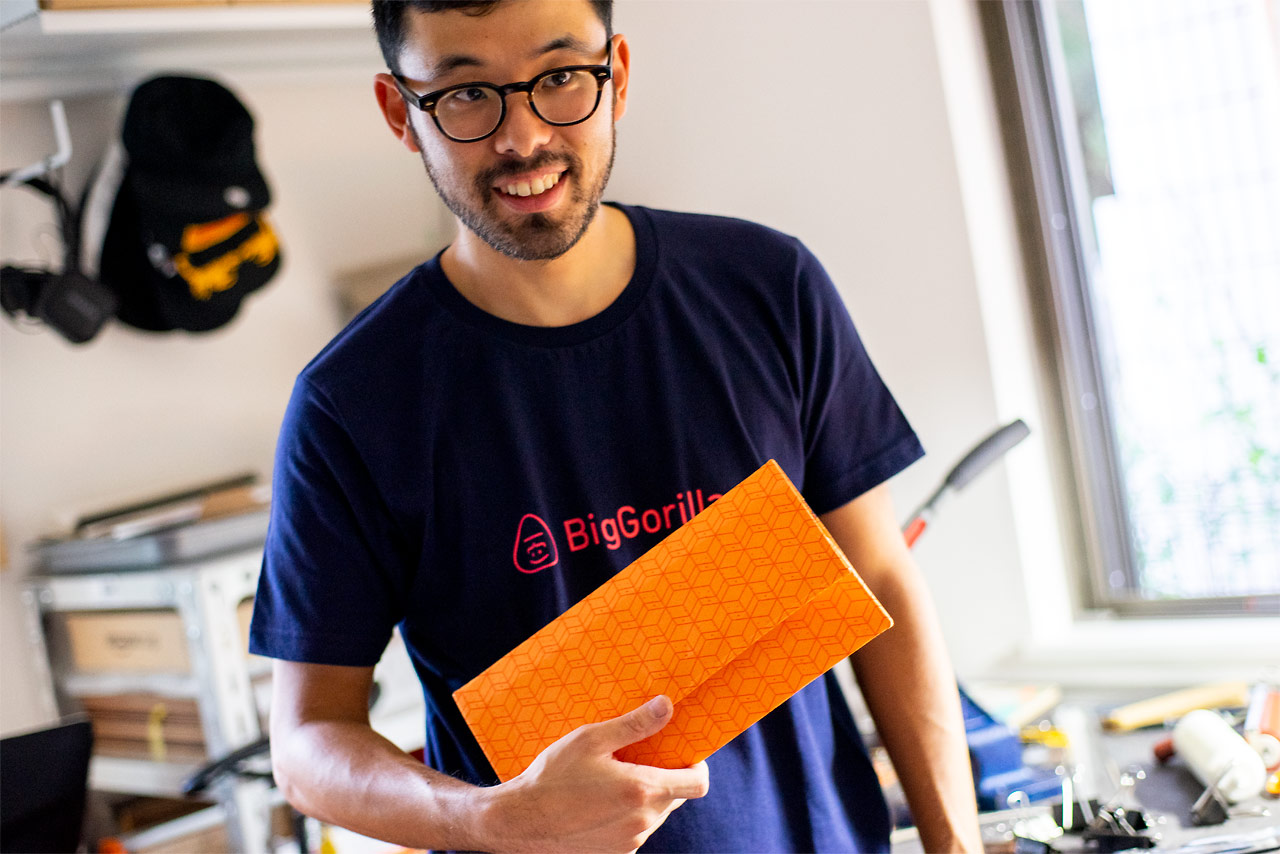
And with that, a clutch bag is successfully created from the Hobonichi Techo box. The bag makes great use of the box’s design, giving it a cute look.
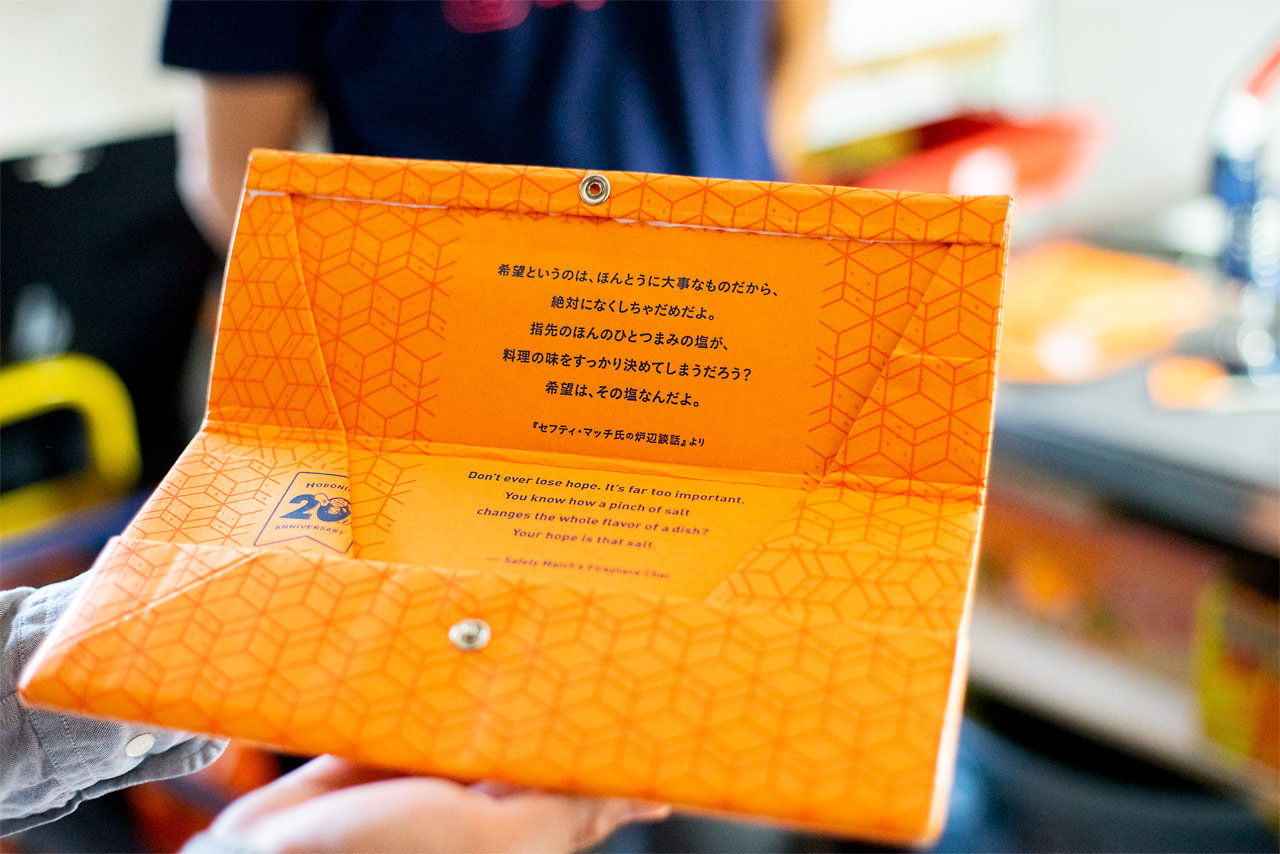
Open up the button and look inside the bag to see the words of Safety Match printed on the inside. What a wonderful thing to open up to every time you use the bag.
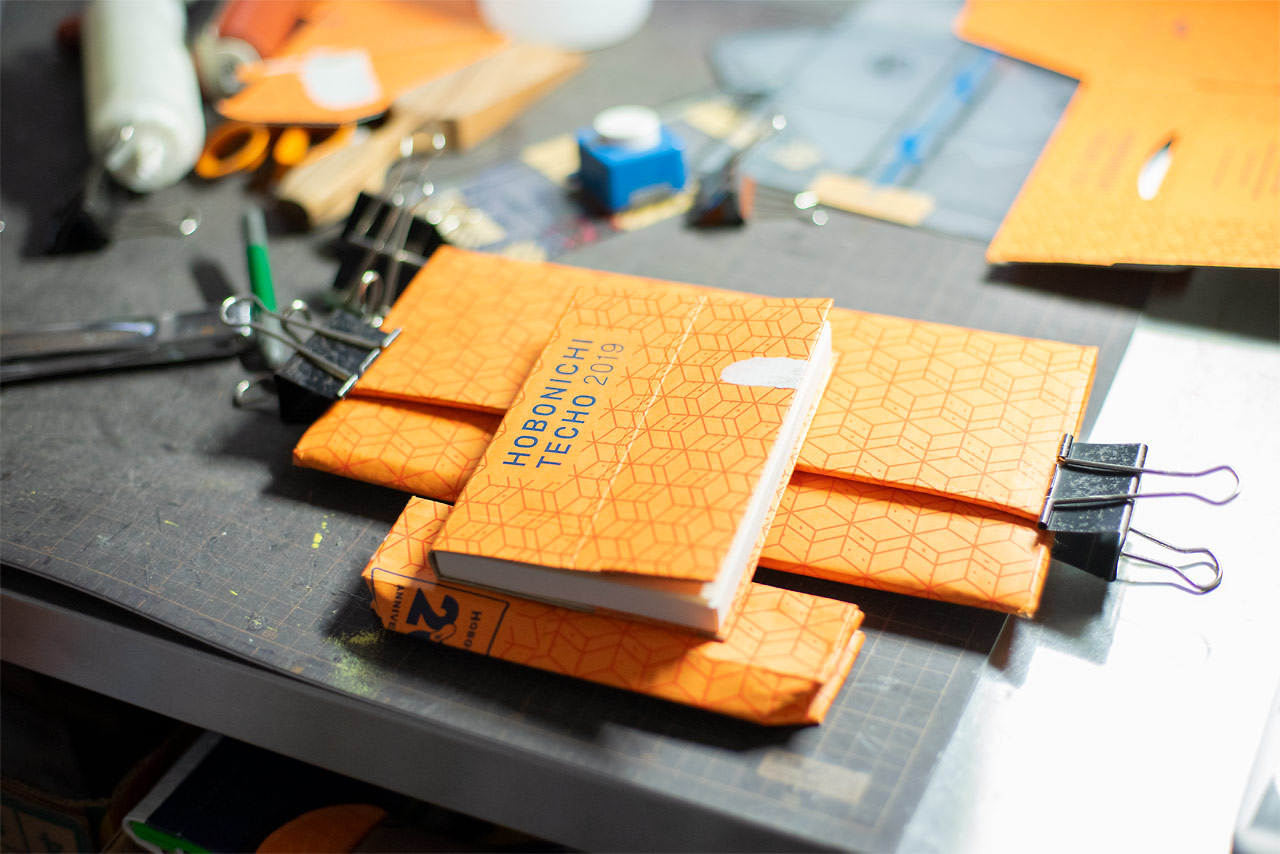
The large and small Hobonichi Techo shipping boxes were enough to create a Hobonichi Techo cover, pen case, and clutch bag. Now that’s a one-of-a-kind set, and it’s all made from the boxes used to deliver products from the Hobonichi Store!
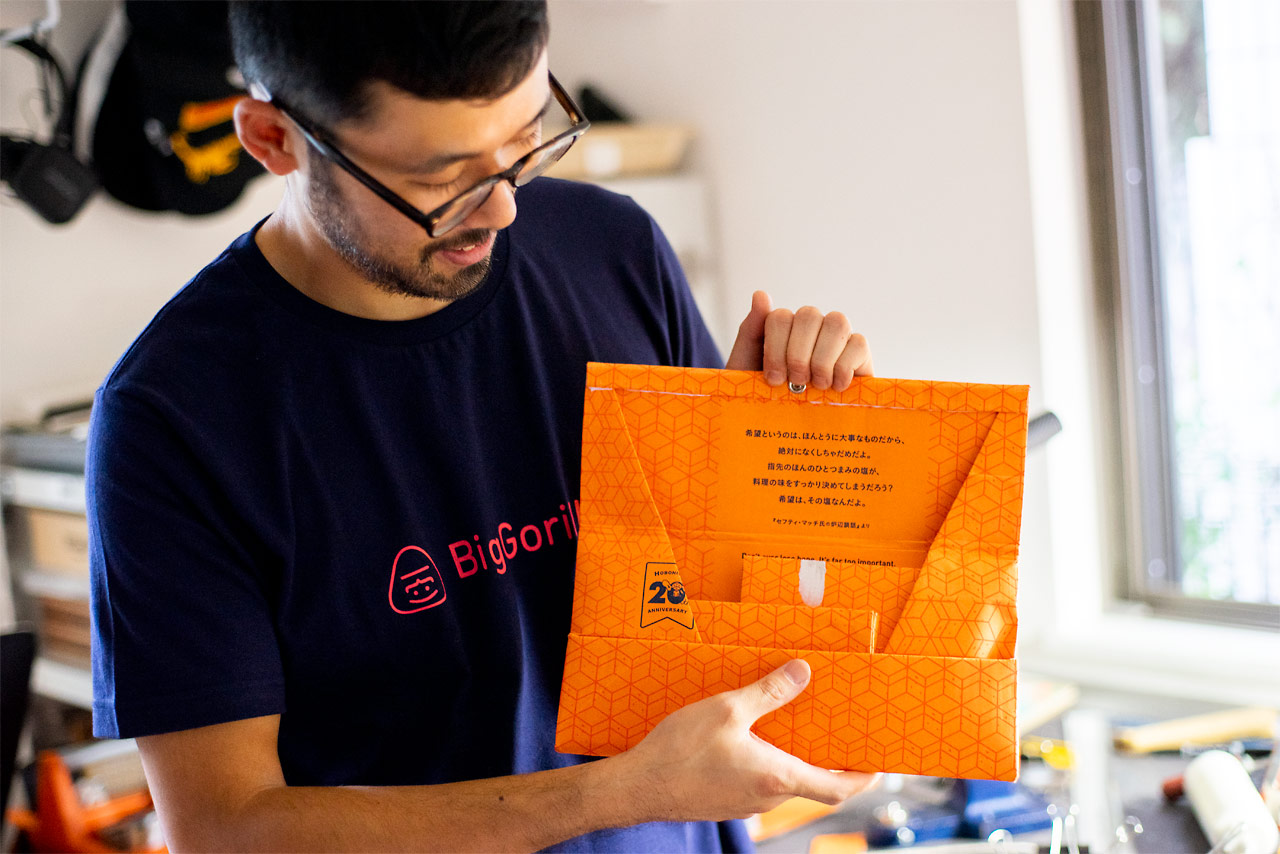
The Hobonichi Techo and pen case fit into the custom-made clutch. The cardboard softens with use, improving its texture.
Shimazu created this special 3-item set by upcycling the Hobonichi Techo shipping box. He holds galleries and workshops around the world, so if you have the opportunity to participate in one of his workshops to create a wallet or business card case, we highly recommend it.
(Coming in Part 3: a report of the workshop Shimazu conducted at Hobonichi for the staff!)
